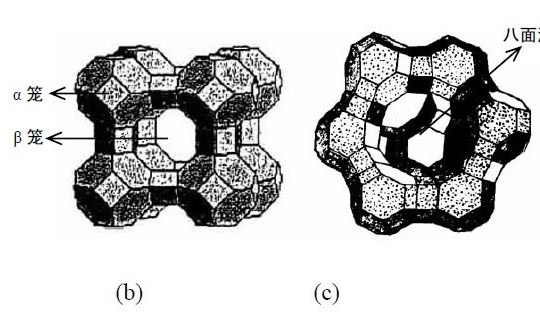News
Zeolite 13x structure and specific surface area distribution
Zeolite 13x crystal has a uniform pore structure, a large surface area, and the surface polarity is very high, zeolite 13x skeleton structure stability is also high. These structural properties make the zeolite 13x not only an excellent adsorbent, but also a good catalyst and a catalytic carrier. In the zeolite zeolite 13x structure within the catalytic reaction, began in the late 1950s Mobil company's laboratory. The discovery marks the beginning of the zeolite 13x study. Due to the uniform pore size in the zeolite 13x structure, the selectivity of the catalyst reaction often depends on the size of the molecule and the pore size. This selectivity is called selective catalytic selectivity. There are four different forms of selective selection catalysis.
1, the reactants of the selective reaction of the reaction mixture of some of the molecules can react, only the diameter of less than the diameter of the molecules can enter the hole in the catalyst site catalytic reaction. Selective catalysis of reactants has been widely used in the refining industry, oil zeolite 13x dewaxing, heavy oil hydrocracking, etc. are.
2. Some of the molecules in the mixture of the product's selectable catalytic product are too large to diffuse out of the pores of the zeolite 13x catalyst, and these non-diffused macromolecules or hetero-isomeric isomers diffuse out, Or cracked into smaller molecules, and even continue to crack, dehydrogenation, and ultimately in the form of carbon deposition in the hole and the orifice, leading to catalyst deactivation.
3, the transition state limit the shape of the reaction of some of the reaction requires a relatively large space in order to form a corresponding transition state, which constitutes a restricted transition state of the selective catalyst. ZSM-5 catalysts are commonly used in this transition state selective catalytic reaction. Which can catalyze the isomerization of low molecular hydrocarbons catalyzed by them, cracking reactions, and the transalkylation of xylene. The ZSM-5 catalyst can prevent coking and has a longer life than any other zeolite 13x or amorphous catalyst, which is very beneficial for industrial production.
4. Selective Catalysis of Molecular Traffic Control In the pore zeolite 13x with two different shapes and sizes, the reactant molecules can easily pass through a pore into the active site of the catalyst for catalytic reaction, while the product molecule is derived from Another channel spread out, as far as possible to reduce the reverse diffusion, thereby increasing the reaction rate. The maximum practical value of selective selective catalysis is to characterize the different pore structure. This kind of catalysis is also widely used in oil refining process and petrochemical industry.

Zeolite Products
Latest News
Contact Us
Contact: Ms.Anna Fei
Phone: +86-15036079565
Tel: +86-371-64368520
Email: info@meiqicn.com
Add:BEISHANKOU TOWN, GONGYI CITY, HENAN, CHINA 451200
